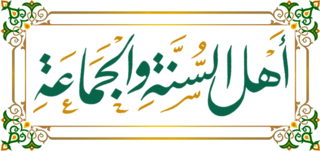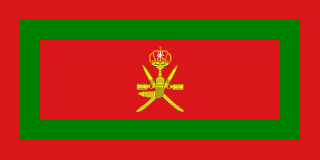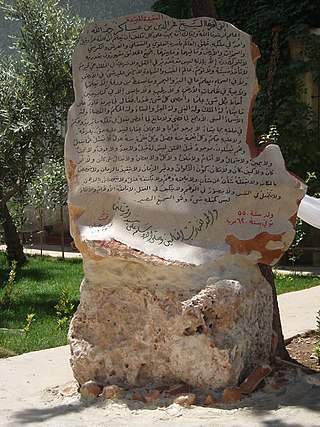Related Research Articles

A madhhab refers to any school of thought within Islamic jurisprudence. The major Sunni madhāhib are Hanafi, Maliki, Shafi'i and Hanbali. They emerged in the ninth and tenth centuries CE and by the twelfth century almost all jurists aligned themselves with a particular madhab. These four schools recognize each other's validity and they have interacted in legal debate over the centuries. Rulings of these schools are followed across the Muslim world without exclusive regional restrictions, but they each came to dominate in different parts of the world. For example, the Maliki school is predominant in North and West Africa; the Hanafi school in South and Central Asia; the Shafi'i school in East Africa and Southeast Asia; and the Hanbali school in North and Central Arabia. The first centuries of Islam also witnessed a number of short-lived Sunni madhhabs. The Zahiri school, which is considered to be endangered, continues to exert influence over legal thought. The development of Shia legal schools occurred along the lines of theological differences and resulted in the formation of the Ja'fari madhhab amongst Twelver Shias, as well as the Isma'ili and Zaidi madhhabs amongst Isma'ilis and Zaidis respectively, whose differences from Sunni legal schools are roughly of the same order as the differences among Sunni schools. The Ibadi legal school, distinct from Sunni and Shia madhhabs, is predominant in Oman. Unlike Sunnis, Shias, and Ibadis, non-denominational Muslims are not affiliated with any madhhab.

Sayyid Khalid bin Barghash Al-Busa'id was the sixth Sultan of Zanzibar. The last sovereign Sultan of Zanzibar, he reigned for roughly three days, after which he was deposed by the United Kingdom in the 38-minute Anglo-Zanzibar War.

Sayyid Saïd bin Sultan al-Busaidi was Sultan of Muscat and Oman, the fifth ruler of the Busaid dynasty from 1804 to 4 June 1856. His rule began after a period of conflict and internecine rivalry of succession that followed the death of his father, Sultan bin Ahmad, in November 1804. He is often referred to as the Lion of Oman, as one of the greatest Omani sultans.

Aḥmad ibn ʽAlī al-Rifāʽī was a Sunni Muslim preacher, ascetic, mystic, jurist, and theologian, known for being the eponymous founder of the Rifaʽi tariqa of Islam. The Rifaʽi order had its greatest following until it was overtaken by the Qadiri order. The Rifaʽi order is most commonly found in the Arab Middle East but also in Turkey, the Balkans and South Asia.

Muhammad al-Hasan ibn Alawi ibn al-Abbas ibn Abd al-Aziz (1944–2004), also known as Muhammad ibn Alawi al-Maliki, was one of the foremost traditional Sunni Islamic scholar of contemporary times from Saudi Arabia. He is considered to be the Mujaddid of 20th-21st century.
Abū Muḥammad Maḥmūd ibn Aḥmad ibn Mūsā Badr al-Dīn al-ʿAynī, often quoted simply as al-'Ayni was a Sunni Islamic scholar of the Hanafi madh'hab and the Shadhili tariqa. Al-'Ayni is an abbreviation for al-'Ayntābi, referring to his native city. He was an eminent scholar regarded as one of the most influential Hanafi jurist and hadith scholar of his time.
Sheikh Uways Al-Barawi was a Somali scholar credited with reviving Islam in 19th century East Africa.

The Banaadiri people are a people group in Somalia. Banaadiris largely inhabit Somalia's southern coastline.
The Bravanese people, also known as the Barawani, are a minority ethnic group inhabiting the city of Barawe of Somalia and Kenya.

Islam is the most prominent religion on the semi-autonomous Zanzibar archipelago and could be considered the Islamic center in the United Republic of Tanzania. Around 99% of the population in the islands are Muslim, with two-thirds being Sunni Muslim and a minority Ibadi, Ismaili and Twelver Shia. Islam has a long presence on the islands, with archeological findings dating back to the 10th century, and has been an intrinsic part in shaping mercantile and maritime Swahili culture in Zanzibar as well as along the East African coast.

The House of Al Bu Said, is the current ruling royal family of Oman, and former ruling house of the Omani Empire (1744–1856), Sultanate of Muscat and Oman (1856–1970) and the Sultanate of Zanzibar (1856–1964). It was founded by Ahmad bin Said Al Busaidi in 1744 and is currently headed by Haitham bin Tariq Al Said.

Abd al-Wahhab al-Sha'rani was a highly influential Egyptian scholar. He was an eminent jurist, traditionist, historian, mystic and theologian. He was one of the Islamic revivalists and scholastic saints of the sixteenth century. He is credited for reviving Islam and is one of the most prolific writers of the early Egyptian-Ottoman period. His legal, spiritual, and theological writings are still widely read in the Muslim world today. He is regarded as "one of the last original thinkers in Islam." He was the founder of an Egyptian order of Sufism, eponymously known as Šaʿrāwiyyah. The order gradually declined after Shaʿrani's death, although it remained active until the 19th century.
Muhammad bin Yahya al-Ninowy is a Syrian-born American Islamic scholar, theologian, and medical doctor. He has been listed among The 500 Most Influential Muslims in a publication compiled by the Royal Islamic Strategic Studies Centre in Amman, Jordan.

The Shafi'i school or Shafi'ism is one of the four major schools of Islamic jurisprudence within Sunni Islam. It was founded by the Muslim scholar, jurist, and traditionist al-Shafi'i, "the father of Muslim jurisprudence", in the early 9th century.
Gibril Fouad Haddad is a Lebanese-born Islamic scholar, hadith expert (muhaddith), author, and translator of classical Islamic texts. He was featured in the inaugural list of The 500 Most Influential Muslims and has been called "one of the clearest voices of traditional Islam in the Western world", a "prominent orthodox Sunni" and a "staunch defender of the traditional Islamic schools of law." He holds ijazas from over 150 scholars across the Muslim world. He was a visiting fellow (2013-2015) then senior assistant professor (2015-2018) at the Sultan Omar Ali Saifuddin Center for Islamic Studies, Universiti Brunei Darussalam. He is also a staunch critic of Wahhabism and Salafism.

Salihiyya is a Tariqa (order) of Sufi Islam prevalent in Somalia and the adjacent Somali region of Ethiopia. It was founded in the Sudan by Sayyid Muhammad Salih (1854-1919). The order is characterized by fundementalism.

Ahmad Zayni Dahlan (1816–1886) was the Grand Mufti of Mecca between 1871 and his death. He also held the position of Shaykh al-Islam in the Hejaz and Imam al-Haramayn. Theologically and juridically, he followed the Shafi'i school of thought.

Abū Isḥāq Ibrāhīm ibn ʿAlī al-Shīrāzī was a prominent Persian jurisconsult, legal theoretician, theologian, debater and muhaqqiq (researcher). He was one of the leading scholars of Shafiʿi jurisprudence in the eleventh century and arguably the most prolific writer of Islamic legal literature.
Sufism has a history in the Philippines evolving for over 1,000 years. Sufism, also known as the science of Tasawwuf, encompasses numerous interpretations by its practitioners and critics. The term is derived from the Arabic words "Safa" (purity) and "Suwf" (wool), symbolizing the woolen garments traditionally worn by Sufis. Essentially, Tasawwuf is the science of Ihsan, focusing on the purification of the self for the love of Allah. This involves following specific Tariqas, practices, and litanies. Tariqas in Sufism can be compared to spiritual orders in Catholicism, such as the Jesuits, Franciscans, and Dominicans. Numerous Tariqas exist in the Philippines today, with followers spread across the country, although they have faced opposition from Wahhabis despite the Sufis' peace-loving nature. The presence of Sufism has been a leading entity increasing the reaches of Islam throughout South Asia.
References
- ↑ Declich, Francesca. Translocal Connections across the Indian Ocean.
- ↑ pg 538 – Notes on Some Members of the Learned Classes of Zanzibar and East Africa in the Nineteenth Century, by B. G. Martin – African Historical Studies, 1971
- ↑ Abdallah Salih Farsy, The Shafi'i Ulama of East Africa, ca. 1830–1970: A Hagiographic Account, trans. and ed. Randall L. Pouwels (Madison, WI: University of Wisconsin African Studies Program, 1989), 46–48.
- ↑ Randall L. Pouwels, Horn and Crescent: Cultural Change and Traditional Islam on the East African Coast, 800–1900 (Cambridge University Press, 1987), 119–120.
- ↑ Farsy, 43–44.
- ↑ Edward Steere, A Handbook of theSwahili Language as Spoken at Zanzibar (London: Society for the Promotion of Christian Knowledge, 1884), vi–vii.
- ↑ Aloo Osotsi Mojola, “The Swahili Bible in East Africa from 1844 to 1996: A brief survey with special reference to Tanzania,” in The Bible in Africa: Transactions, Trajectories and Trends, ed. Gerald O. West and Musa W. Dube (Leiden: Brill, 2001), 514.